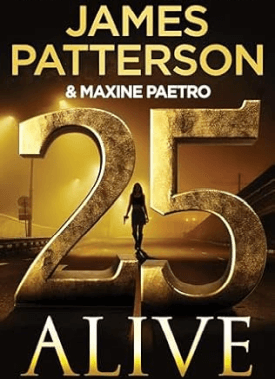John Edgar Wideman Books In Order
Book links take you to Amazon. As an Amazon Associate I earn money from qualifying purchases.Publication Order of Homewood Books
| Sent for You Yesterday | (1981) | Description / Buy at Amazon |
| Hiding Place | (1981) | Description / Buy at Amazon |
| Damballah | (1984) | Description / Buy at Amazon |
Publication Order of Standalone Novels
| The Lynchers | (1973) | Description / Buy at Amazon |
| A Glance Away | (1975) | Description / Buy at Amazon |
| Hurry Home | (1986) | Description / Buy at Amazon |
| Reuben | (1987) | Description / Buy at Amazon |
| Philadelphia Fire | (1990) | Description / Buy at Amazon |
| The Cattle Killing | (1996) | Description / Buy at Amazon |
| Two Cities | (1997) | Description / Buy at Amazon |
| Fanon | (2008) | Description / Buy at Amazon |
Publication Order of Non-Fiction Books
| Brothers and Keepers | (1984) | Description / Buy at Amazon |
| Fatheralong | (1994) | Description / Buy at Amazon |
| Conversations with John Edgar Wideman | (1998) | Description / Buy at Amazon |
| Chronicles of the Civil War | (1999) | Description / Buy at Amazon |
| Hoop Roots | (2001) | Description / Buy at Amazon |
| The Island Martinique | (2003) | Description / Buy at Amazon |
| Writing to Save a Life | (2016) | Description / Buy at Amazon |
| Slaveroad | (2024) | Description / Buy at Amazon |
Publication Order of Collections
| Fever | (1989) | Description / Buy at Amazon |
| Stories of John Edgar Wideman | (1992) | Description / Buy at Amazon |
| All Stories Are True | (1993) | Description / Buy at Amazon |
| God's Gym | (2005) | Description / Buy at Amazon |
| Briefs | (2010) | Description / Buy at Amazon |
| American Histories | (2018) | Description / Buy at Amazon |
| You Made Me Love You | (2021) | Description / Buy at Amazon |
| Look For Me and I'll Be Gone | (2021) | Description / Buy at Amazon |
Publication Order of Best American Short Stories Books
| The Best American Short Stories 2002 | (2002) | Description / Buy at Amazon | ||
+ Show All Books in this Series | ||||
| Anthology series. | ||||
Publication Order of Anthologies
John Edgar Wideman is a literary fiction author from the United States whose life was as dramatic as any of his novels known for their Faulknerian quality.
The author was born in 1941 in Washington DC but his family moved to the African American community of Homewood in Pittsburgh, Pennsylvania when he was just one year old. This community would then be the setting for much of his fiction work.
In his teenage years, he went to one of the best secondary schools in Pittsburgh known as Peabody High School. It was here that it was discovered that he was not only good in sports but he was also a good student.
Soon enough, the University of Pennsylvania awarded him the Benjamin Franklin scholarship. At the university, he was the winner of the creative writing prize and was a member of the Phi Beta Kappa organization.
Edgar Wideman matched his scholarly achievements with athletic ones, as he successfully competed on the track and was a basketball forward player.
In 1963, John got his bachelor’s degree in English and went to New College of Oxford University to study Philosophy under a Rhodes scholarship. It was at Oxford University that John Edgar Wideman studied eighteenth-century narrative techniques.
In 1966, he moved back to the US where he earned a Kent Felklowsjhip at the University of Iowa Writers Workshop. Soon after that feat, he would become one of the first black-tenured professors at the University of Pennsylvania.
It was there that he completed his 1967 published “A Glance Away.” He followed that up with three critically acclaimed works that did not do so well commercially. According to the author, this was because he was still operating at apprentice levels.
It would not be until he published “Damballah,” a short story collection in 1981 that he grew into his learned, mature, and distinctively black style, which switches between the profane and the sublime a high literary mode, and an earthy vernacular.
He would make use of his style to spin untrue and true tales that accumulate and overlap into tangible characters and landscapes just like someone with a 3-D printer.
“Damballah” alongside “Hiding Place” and “Sent for You Yesterday” marked Edgar’s emergence as one of the best literary authors in the United States.
He has since made a reputation for penning stories that depict African American experiences in the cities in which they live.
After working as a director of the University of Pennsylvania’s Afro-American studies program for two years, John Edgar Wideman published his first novel that focused on interracial issues in 1973 which he titled “The Lynchers.”
Wideman would leave the University of Pennsylvania in 1975 and head to the University of Wyoming in the same capacity. Wideman subsequently taught at Brown University and the University of Massachusetts. He would also become the first author to receive the Faulkner/PEN award twice in 1990 and 1983.
Wideman is currently a University of Massachusetts English professor. He has over the years penned articles on the likes of Thelonius Monk, Malcolm X, Emmett Till, Spike Lee, Michael Jordan, Denzel Washington, and women’s professional basketball that have appeared in some prestigious publications.
His works have been featured in New York Times Magazine, The New Yorker, Emege, Vogue, and Esquire among many others.
Wieman currently makes his home in Amherst where he lives with his layer wife Judy. Jamila his daughter is a professional basketball player and Dan his son is a published author.
“Sent for You Yesterday” by John Edgar Wideman is a work set in the Homewood suburb of Philadelphia where the author grew up. This is probably why you can immediately tell that he gets into his element when writing about the residents and the locale.
The novel is populated by three generations of family and friends beginning with Doot the narrator. It reaches back to Freeda and John French his grandparents and focuses on Doot’s uncle Carl French, Carl’s best friend, and Carl’s on-and-off love Lucy Tate.
The experiences of the albino Brother Tate alongside Junbug his son are central to the work. It showcases some intriguing relationships as it relates to some interesting events over the course of the story.
Wideman has penned a work with lyrical quality, even as he tackles issues of friendship, family, and race in this blockbuster novel.
It is an evocative and dazzling milieu that ranges from the narcotized 1970s to the uninhibited and wild 1920s. The author shows his exceptional skills at establishing a symbolic and mythological link between plot and language, land and character.
John Edgar Wideman’s novel “Damballah” opens on a plantation and ends with the portrayal of some of the original residents of the African American suburb of Homewood.
Much of the novel explores the Wideman family through the lens of oral folktales. It makes for interesting narration as each of the characters narrates their own stories as they cover different aspects of the family over a given timeline.
It introduces a slave named Orion who accidentally exposed himself to the house mistress and was subsequently decapitated. There are also other characters such as John Frenchy who plays a significant role in the family and the legend in the gospel circuit in Reba Love Jackson.
It is an impressive collage of the stereotypical African American family that tells the history of Homewood. It was a Pennslyvania community that owed its founding to a runaway slave and went on to have its own share of tragedies, deaths, and births through the decades.
With impressive lyricism, the author sings of dead fathers, lost gods, basketball, the gospel, and of dead children in garbage cans. It is a celebration of people that when faced with a crisis, hold each other up with dignity, courage, and grace.
“Hiding Place” by John Edgar Wideman opens with a man laying dead on some nondescript lot. The only other person there is Tammy a black man who denies any involvement in the homicide.
However, the police will certainly shoot him first and ask questions later given that he is black. Given his predicament, He turns to his relatives the most prominent of which is Mother Bess.
She is a mean and crazy old lady that has been hardened by the streets of Homewood. Together Mother Bess and Tommy hide in fear and anger trapped in the same cycle that trapped the generations that came before them.
It is a brilliant portrait of the African American experience in America.



 Any issues with the book list you are seeing? Or is there an author or series we don’t have? Let me know!
Any issues with the book list you are seeing? Or is there an author or series we don’t have? Let me know!